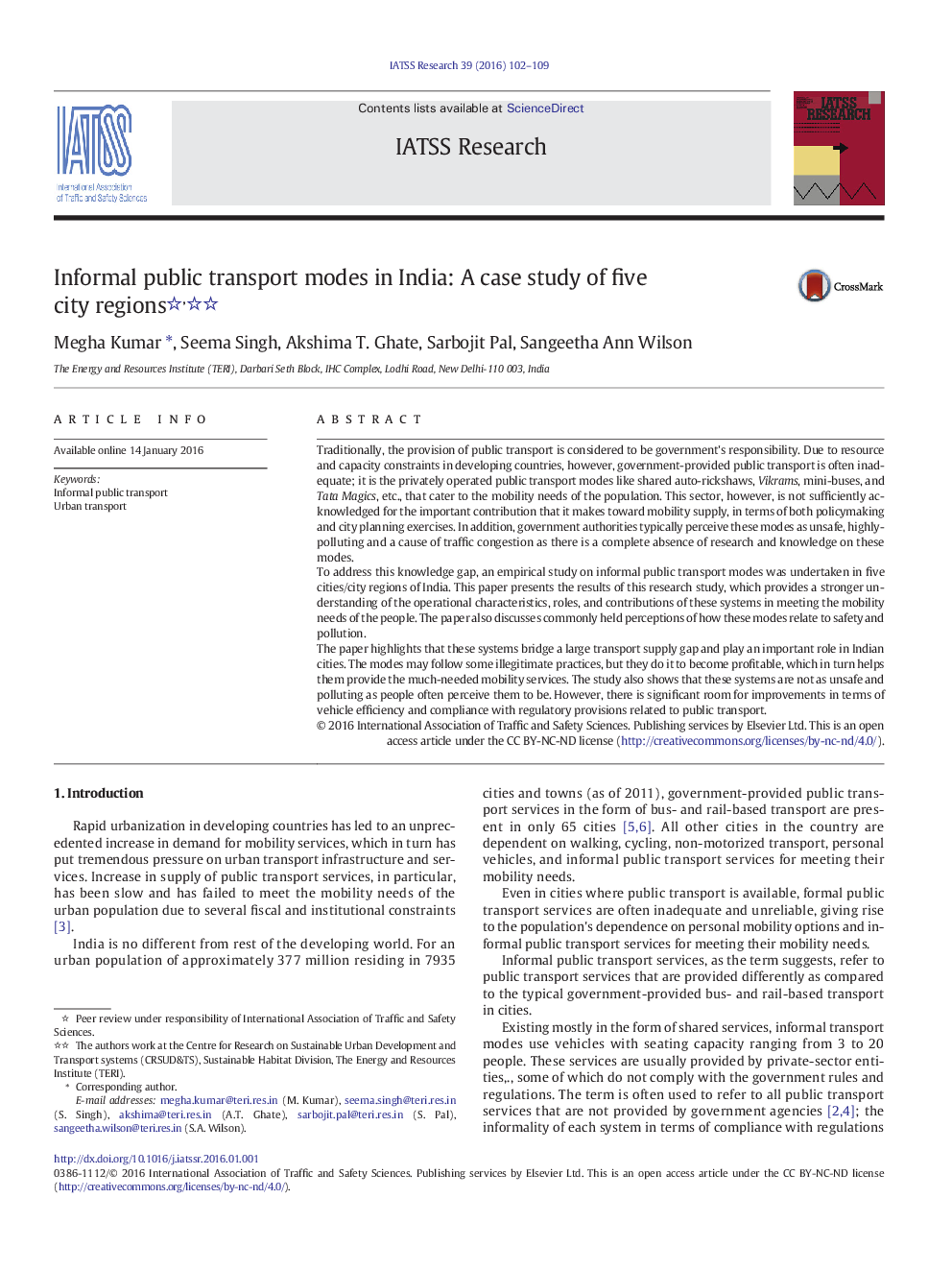| Article ID | Journal | Published Year | Pages | File Type |
|---|---|---|---|---|
| 1104601 | IATSS Research | 2016 | 8 Pages |
•A study of informal public transport systems in five Indian cities/city regions•A focus on studying the roles, operational characteristics, and regulatory compliance of informal public transport systems•An examination of issues that may impact the safety and environmental performance of these modes
Traditionally, the provision of public transport is considered to be government's responsibility. Due to resource and capacity constraints in developing countries, however, government-provided public transport is often inadequate; it is the privately operated public transport modes like shared auto-rickshaws, Vikrams, mini-buses, and Tata Magics, etc., that cater to the mobility needs of the population. This sector, however, is not sufficiently acknowledged for the important contribution that it makes toward mobility supply, in terms of both policymaking and city planning exercises. In addition, government authorities typically perceive these modes as unsafe, highly-polluting and a cause of traffic congestion as there is a complete absence of research and knowledge on these modes.To address this knowledge gap, an empirical study on informal public transport modes was undertaken in five cities/city regions of India. This paper presents the results of this research study, which provides a stronger understanding of the operational characteristics, roles, and contributions of these systems in meeting the mobility needs of the people. The paper also discusses commonly held perceptions of how these modes relate to safety and pollution.The paper highlights that these systems bridge a large transport supply gap and play an important role in Indian cities. The modes may follow some illegitimate practices, but they do it to become profitable, which in turn helps them provide the much-needed mobility services. The study also shows that these systems are not as unsafe and polluting as people often perceive them to be. However, there is significant room for improvements in terms of vehicle efficiency and compliance with regulatory provisions related to public transport.
